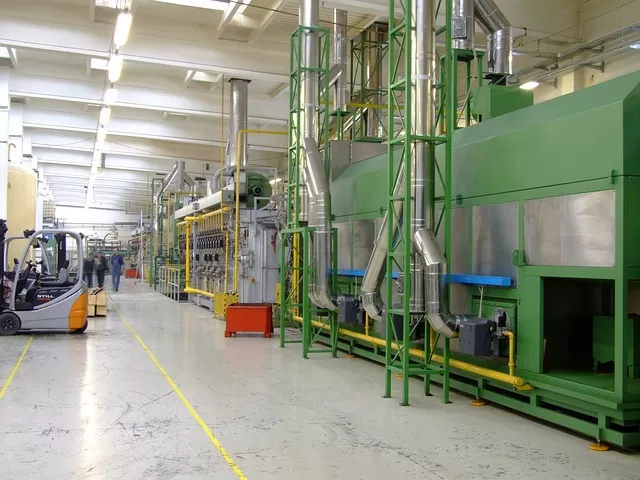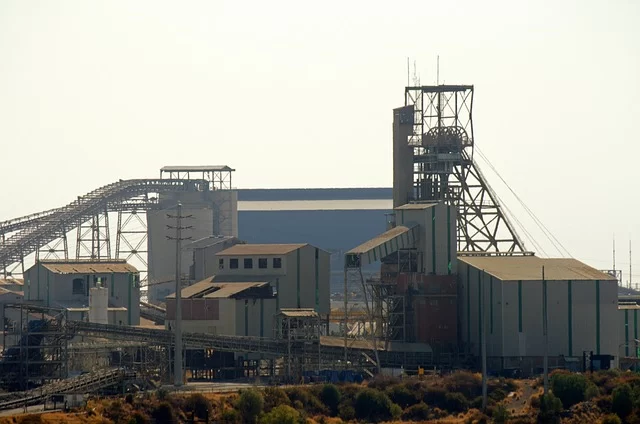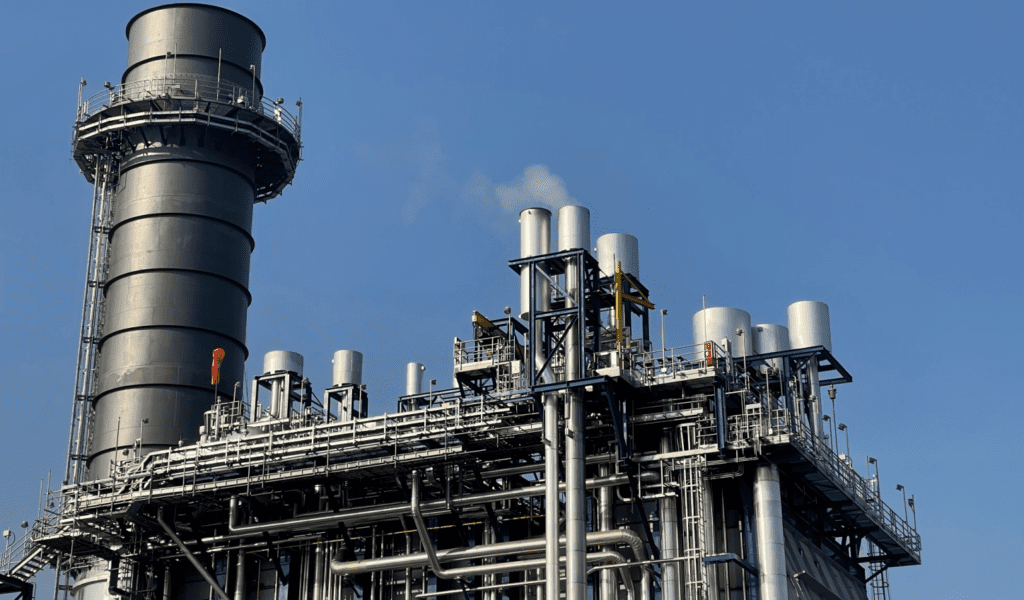A Comprehensive Guide On The 6 P's of Asset Management.
Effective asset management is crucial for companies whose core operations rely heavily on physical assets or infrastructure such as:
1. Manufacturing companies.
2. Process industries (e.g., chemical, oil and gas, pharmaceuticals).
3. Utilities (water, electricity, gas).
4. Transportation and logistics firms.
5. Heavy industry and mining operations.
For these companies, asset reliability and performance have a direct impact on their ability to function, produce goods, or deliver core functions.
Effective asset management in these sectors is not just a best practice to follow; it’s a fundamental necessity for operational continuity, safety, and profitability.
While companies outside of the industries I mentioned may benefit from asset management principles, the impact is typically less direct on their core business functions.
In essence, the importance of asset management is proportional to the extent to which a company’s operations rely on the consistent, dependable performance of physical assets.
For asset-intensive industries, strong asset management systems and related strategies can mean the difference between operational excellence and costly inefficiencies or failure.
From purchasing and commissioning to operation, maintenance, overhauls, upgrading, and eventual replacement, asset management strategies aim to maximize production performance and optimise processes, systems, and asset value by enhancing efficiency and overall equipment effectiveness.
This comprehensive approach ensures that assets are managed effectively throughout their entire lifecycle, contributing significantly to an organization’s operational excellence and financial sustainability.
By implementing robust asset management practices, companies can enhance both their operational effectiveness and financial health.
What Does Good Asset Management Look Like?
A well-structured asset management approach offers numerous benefits to a company’s production processes.
These include reduced risk of asset failure, increased uptime, optimised operation and maintenance costs, enhanced safety in operations and maintenance activities, improved compliance with statutory and regulatory requirements, and enhanced decision-making capabilities.
Asset management principles provide a foundation for companies to build maintenance departments that prioritise preventive and predictive maintenance, challenging the notion that unplanned asset failures are inevitable.
These departments actively engage in defect elimination programs and conduct thorough analyses of asset performance and maintenance history data. Moreover, each time a failure occurs, these companies perform root cause analysis to minimize the likelihood of repeat failures, fostering a culture of continuous improvement and reliability.
In a nutshell:
1. Effective asset management reduces failure risks and increases uptime while optimising costs.
2. It enhances safety and ensures compliance with regulatory requirements.
3. Asset management shifts focus from reactive to preventive and predictive maintenance.
4. It encourages data-driven decision-making through performance analysis and history tracking.
5. Root cause analysis of failures is a key component in preventing recurring issues.
Companies that prioritise asset data collection, condition monitoring, and performance measurement can make informed decisions about maintenance, overhauls, upgrades, or replacements.
This proactive approach ensures continuous operational efficiency and helps avoid unexpected financial burdens.
The concept of asset management can be summarized by my 6 P’s Of Asset Management, which form the foundation of a comprehensive strategy.
Each element (Preserve, Prevent, Protect, Perform, Predict & Purchase) plays a vital role in the overall process, contributing to the effectiveness of asset management practices.
1. Preserve asset condition & minimize the likelihood of failure or decline.
2. Prevent contamination of critical asset functions from external sources.
3. Protect the structural integrity & security of assets.
4. Perform the right amount of preventive maintenance at the right times.
5. Predict the need for corrective measures via condition monitoring.
6. Purchase new assets and components according to quality specifications.
P1: Preserve asset condition & minimize the likelihood of failure or decline.
Preserving the current condition of assets is a critical component of effective asset management, aimed at minimizing the likelihood of failure or decline. This preservation strategy ensures assets maintain optimal condition, extending their lifecycle and enhancing overall performance.
Regular inspections form the backbone of asset preservation, enabling early identification of potential issues and facilitating timely interventions to prevent minor problems from escalating into major failures.
Complementing these inspections, prompt repairs address wear and tear, maintaining functionality and reducing the risk of unexpected breakdowns.
A proactive maintenance schedule, incorporating both predictive and preventive techniques, ensures assets receive regular servicing.
This approach leverages asset management tools, data analytics and historical performance metrics to forecast potential issues, allowing for pre-emptive action.
To ensure the best possible preservation of asset condition, forward-thinking companies are increasingly adopting a wide array of methodologies and techniques.
These approaches, when incorporated with maintenance strategy development, can significantly enhance asset longevity, reliability, and overall operational efficiency.
Lean Six Sigma, with its focus on reducing defects and variability, helps manufacturers achieve substantial improvements in quality and waste reduction.
Total Productive Maintenance (TPM) empowers operators to take ownership of equipment maintenance, boosting equipment effectiveness.
The elimination of the Eight Types of Waste allows companies to streamline their operations and reduce inefficiencies.
Defect Elimination Management leverages data analytics to address recurring issues, significantly reducing warranty claims.
Total Quality Management (TQM) principles ensure quality is embedded at every stage of production, leading to improved customer satisfaction.
Condition-Based Maintenance (CBM) and Reliability-Cantered Maintenance (RCM) have improved how companies approach asset upkeep. These strategies allow for more precise, timely, and cost-effective maintenance interventions.
Predictive analytics and telematics are transforming fleet management, resulting in fewer breakdowns and improved safety.
The main takeaway is that no single approach works in all situations, and if businesses remain open-minded and willing to explore and adopt various methodologies that best suit their specific needs and circumstances, they will provide themselves with the best possible platform for asset management success.
The tip is to be open to embracing a variety of techniques, from Lean Six Sigma and TPM to CBM and predictive analytics, so that organisations can develop comprehensive asset preservation strategies.
Moreover, it’s crucial for companies to foster a culture of continuous improvement and adaptability. As new technologies and methodologies emerge, businesses should be prepared to evaluate and integrate these innovations into their asset management practices.
This open-minded approach not only helps in preserving assets but also positions companies to stay competitive in an ever-evolving industrial landscape.
By remaining receptive to diverse strategies and continuously refining their approach, companies can significantly enhance their ability to preserve asset condition, minimize failures, and ultimately drive operational excellence across their organization.
The following are some examples of how companies in various industries use a combination of techniques to maintain asset condition and optimise productivity:
1. Lean Six Sigma: Manufacturers use this methodology to reduce defects and variability in production processes. For instance, Whirlpool Corporation implemented Lean Six Sigma to reduce scrap rates by 50% and improve first-pass yield quality by 10%.
2. Total Productive Maintenance (TPM): This approach involves operators in routine maintenance tasks. Electrolux, for example, uses TPM to achieve over 85% equipment effectiveness in some of its plants.
3. The Eight Types of Waste: Companies like Samsung focus on eliminating these wastes (Defects, Overproduction, Waiting, Non-utilized talent, Transportation, Inventory, Motion, and Excess Processing) to streamline operations.
4. Defect Elimination Management: Panasonic employs this strategy, using data analytics to identify recurring defects and implement permanent solutions, reducing warranty claims by up to 20%.
5. Total Quality Management (TQM): LG Electronics uses TQM principles to ensure quality at every stage of production, resulting in a 30% reduction in customer complaints over a 5-year period.
In the transportation sector, various industries employ specific techniques:
1. Rail:
a. Condition-Based Maintenance (CBM): Deutsche Bahn uses sensors and IoT devices to monitor rail infrastructure in real-time, predicting maintenance needs and reducing unplanned downtime by 25%.
b. Reliability-Centered Maintenance (RCM): Network Rail in the UK employs RCM to prioritize maintenance activities, leading to a 15% reduction in track-related delays.
2. Road:
a. Predictive Analytics: UPS uses advanced analytics to predict vehicle maintenance needs, reducing breakdowns by 35% and maintenance costs by 30%.
b. Telematics: FedEx employs telematics systems to monitor vehicle health and driver behavior, improving fuel efficiency by 8% and reducing accidents by 20%.
3. Ocean:
a. Autonomous Maintenance (AM): Maersk implements this TPM pillar, empowering crew members to perform routine maintenance, resulting in a 40% reduction in major equipment failures.
b. Digital Twin Technology: Rolls-Royce uses digital twins to simulate and optimize ship engine performance, reducing fuel consumption by up to 3% and maintenance costs by 20%.
These industry-specific techniques and methodologies demonstrate how tailored approaches to asset preservation can lead to significant improvements in productivity, cost reduction, and service reliability across different sectors.
In essence, preserving asset condition through regular inspections, timely repairs, and best maintenance practices is fundamental to minimizing failure risks and ensuring long-term asset performance.
These strategies, supported by real-world examples, underscore the importance of proactive asset management across diverse industrial sectors.
5 key takeaways from this section:
1. Asset preservation is crucial for minimizing failure risks and extending asset lifecycles.
2. Regular inspections and timely repairs are fundamental to effective asset preservation.
3. Proactive maintenance schedules, combining predictive and preventive techniques, are essential for optimal asset management.
4. Data analytics and historical performance metrics play a vital role in forecasting potential issues.
5. Real-world examples from various industries demonstrate the tangible benefits of effective asset preservation strategies.
P2: Prevent contamination of critical asset functions from external sources.
Preventing contamination is a critical aspect of asset management, pivotal in maintaining the performance and longevity of assets.
Contamination can arise from various external sources, including dust, water ingress, the wrong fluid or grease use and chemical exposure, which can and often will compromise the functionality and durability of assets.
Using the wrong oil or grease specification in assets with oil compartments and greasing requirements can lead to several issues, including:
1. Reduced lubrication performance: Different oils and greases are formulated for specific operating conditions, temperatures, and loads. Using the wrong specification can result in inadequate lubrication, leading to increased friction, wear, and eventually component failure.
2. Compatibility issues: Some oils and greases may not be compatible with the materials used in the asset’s components, such as seals, gaskets, or bearing surfaces. Incompatibility can cause swelling, degradation, or premature failure of these components.
3. Contamination: Certain oils and greases may contain additives or contaminants that can harm specific components or systems within the asset. For example, using a grease with high levels of solid additives in a precision bearing can lead to abrasive wear and premature failure.
4. Environmental concerns: Using the wrong oil or grease specification can result in increased emissions, leakage, or disposal issues, depending on the asset’s application and operating environment.
To prevent these issues, several preventive measures can be taken:
1. Proper labelling and storage: Ensure that all oils and greases are clearly labelled with their specifications and stored in designated areas to prevent mixing or accidental use.
2. Training and awareness: Provide comprehensive training to maintenance personnel on the importance of using the correct lubricants and the potential consequences of using the wrong specifications.
3. Maintenance procedures and checklists: Implement detailed maintenance procedures and checklists that clearly specify the required lubricant types, quantities, and application points for each asset.
4. Lubricant management system: Consider implementing a lubricant management system, which can help track inventory, usage, and reordering of lubricants, reducing the chances of using the wrong specification.
5. Periodic inspections and audits: Conduct regular inspections and audits to ensure that the correct lubricants are being used and that there are no instances of cross-contamination or misapplication.
6. Supplier qualification and verification: Establish a robust supplier qualification and verification process to ensure that the lubricants received meet the specified requirements and are not counterfeit or substandard.
By implementing these preventive measures, organizations can minimize the risks associated with using the wrong oil or grease specification, prolonging the lifespan of their assets and ensuring safe and efficient operations.
Implementing clean environments is the first step in mitigating these risks. This involves maintaining a controlled atmosphere where critical assets are housed, ensuring that temperature, humidity, and air quality are regulated to minimize contamination.
Using protective covers is another effective measure to safeguard assets. These covers act as barriers against external contaminants, providing an extra layer of protection.
For instance, in industrial settings, machinery and equipment often operate in harsh environments where dust and debris are prevalent. Protective covers can significantly reduce the exposure of these assets to such contaminants, thereby enhancing their operational efficiency and lifespan.
Proper handling procedures are equally essential in preventing contamination. This includes training personnel on the correct methods of handling and maintaining assets.
Regular inspections and maintenance routines should be established to detect and address potential contamination sources promptly.
For example, in the pharmaceutical industry, strict handling protocols are in place to ensure that equipment used in drug manufacturing remains sterile and uncontaminated, thereby guaranteeing product quality and safety. The impact of contamination on asset performance and longevity cannot be overstated.
Contaminated assets often experience accelerated wear and tear, leading to frequent breakdowns and costly repairs.
In severe cases, contamination can render an asset obsolete, necessitating its replacement. Real-world examples abound, such as the aerospace sector, where even minute contaminants can affect the precision and reliability of aircraft components, compromising safety and performance.
Preventing contamination through robust grease and oil management processes, clean environments, protective covers, and proper handling procedures is paramount in asset management.
By adopting these measures, organizations can ensure that their assets remain functional, efficient, and long-lasting, thereby optimising their overall performance and value.
P3: Protect The Structural Integrity & Security Of Assets.
In asset management, ensuring the structural integrity and security of assets is yet another thing that is paramount.
This involves a comprehensive approach that includes physical security measures, environmental controls, and structural reinforcements.
These strategies are designed to mitigate common threats and maintain the longevity and functionality of assets.
Physical security measures are the first line of defense in protecting assets. These measures can range from basic locks and barriers to advanced surveillance systems and access control protocols.
Incorporating technology such as CCTV cameras, motion detectors, and biometric access systems can significantly enhance security.
Regular audits and security assessments are crucial to identify potential vulnerabilities and ensure that all security protocols are up-to-date.
Environmental controls are equally important in asset protection. Factors such as temperature, humidity, and air quality can have a profound impact on the structural integrity of assets.
Implementing climate control systems and monitoring devices can help maintain optimal conditions, thereby preventing degradation.
For instance, dehumidifiers and air purifiers can mitigate the effects of moisture and pollutants, which can cause corrosion or other forms of damage for electronic equipment inside buildings.
Structural reinforcements play a critical role in safeguarding assets from physical and environmental threats. This includes the use of high-quality materials and construction techniques that enhance durability.
Regular maintenance and structural integrity inspections are essential to detect and address any signs of wear and tear early.
Reinforcing structures with additional supports and protecting them with quality coatings can further extend their lifespan.
Common threats to asset integrity include natural disasters, vandalism, and unauthorized access.
Developing a robust risk management plan that includes emergency response procedures and disaster recovery strategies is vital.
Training staff to recognize and respond to potential threats can also enhance overall security and preparedness.
By implementing a combination of physical security measures, environmental controls, and structural reinforcements, organizations can effectively protect their assets.
This holistic approach not only preserves the structural integrity but also ensures the long-term security and functionality of valuable assets.
P4: Perform the right amount of preventive maintenance at the right times.
Performing timely preventive maintenance is a crucial aspect of effective asset management.
By developing quality maintenance strategies and then planning, scheduling, and carrying out maintenance work at appropriate intervals, you can significantly increase value, meet production targets, extend the lifespan of their assets, minimise downtime, and ultimately reduce waste and associated costs.
The value of a well-planned maintenance schedule cannot be overstated because it provides the maintenance execution team with a platform to ensure that your assets are consistently operating at peak efficiency.
Determining the optimal maintenance intervals necessitates a thorough risk-based approach, and there are several approaches you can use to help you understand and make the best use of the asset’s operational environment, usage requirements and previous trends, lessons learned from other companies, and manufacturer recommendations.
Data-driven approaches, such as predictive analytics and condition monitoring, can also play a pivotal role in fine-tuning maintenance schedules.
These methodologies allow organizations to predict potential failures and address them before they escalate into costly repairs or replacements.
In the manufacturing sector, machinery that undergoes regular preventive maintenance is less likely to experience unexpected breakdowns, leading to increased production uptime, reduced repair costs and the right amount of product heading out the door day after day.
Similarly, in the transportation industry, routine quality vehicle maintenance ensures safety, dependability, and regulatory compliance, preventing costly accidents, service interruptions, and ensuring that people and goods arrive at their destinations on time with zero harm.
Implementing preventive maintenance strategies can yield significant outcomes across various sectors.
In healthcare, for example, regular calibration and servicing of medical equipment ensure accurate diagnostics and patient safety.
In the energy sector, maintaining infrastructure such as pipelines and power plants prevents catastrophic failures and enhances operational efficiency.
These examples underscore the universal applicability and benefits of preventive maintenance.
Ultimately, the key to successful preventive maintenance lies in its timely execution and strategic planning.
By investing in the right tools, technologies, and training, organizations can achieve a balanced approach to maintenance that safeguards their assets, optimises performance, and maximizes return on investment.
P5: Predict the need for corrective measures via condition monitoring.
Condition monitoring plays a pivotal role in asset management by enabling organizations to predict the need for early corrective measures.
Through the use of various condition monitoring techniques, such as vibration analysis, thermal imaging, and oil analysis, it is possible to identify potential issues before they escalate into major problems.
Condition Monitoring is especially critical in the asset management of mobile machinery because for several important reasons:
1. Preventive maintenance: This involves programmed inspections, adjustments and servicing of assets in order to detect early signs of degradation, wear, or potential failures.
a. Condition monitoring actions gives them the data which enables the delivery of new or amended servicing activities, thereby avoiding unplanned downtime and costly repairs from failures.
b. This not only reduces the need for premature asset replacements, but also improves the return on investment for those assets.
2. Improved dependability and safety: Regular condition monitoring ensures that assets operate within acceptable performance and safety limits.
a. This reduces the likelihood of unexpected failures, which could result in safety incidents, environmental hazards, or production disruptions.
3. Optimised maintenance work: Condition monitoring data provides valuable insights into asset health, allowing organisations to better plan and prioritise maintenance activities.
a. This enables them to allocate resources more efficiently and reduce unnecessary maintenance tasks, resulting in cost savings.
b. Below is some examples of how condition monitoring associated with a dump truck can provide valuable insights into various aspects of its health and performance.
· Engine health: By monitoring parameters such as oil pressure, coolant temperature, exhaust emissions, and engine vibrations, the condition of the engine can be assessed. This can help detect issues like worn piston rings, faulty injectors, or bearing failures before they lead to catastrophic engine failure.
· Drivetrain health: Monitoring the condition of the transmission, differentials and driveshafts can reveal issues like gear wear, bearing degradation, or lubricant contamination. This information can help prevent breakdowns and ensure efficient power transfer from the engine to the wheels.
· Brake system health: Monitoring brake performance, brake pad wear, and brake fluid condition can help identify potential brake system failures before they compromise the vehicle’s safety.
· Suspension and steering system health: Monitoring the condition of suspension components (e.g., shocks, springs, bushings) and steering components (e.g., tie rods, ball joints) can help detect issues that affect vehicle stability, handling, and operator comfort.
· Tire condition: Monitoring tire pressure, tread depth, and temperature can help optimize tire life and prevent tire-related incidents, such as blowouts or excessive wear.
· Frame and body condition: By monitoring stress levels, vibrations, and structural integrity, potential issues with the frame, body, or dump bed can be detected, preventing failures that could lead to safety hazards or load spills.
· Hydraulic system health: Monitoring hydraulic fluid levels, pressures, and temperatures can help identify leaks, contamination, or pump/valve failures in the hydraulic systems that operate the dump bed and other components.
· Electrical system health: Monitoring the performance of the alternator, battery, and other electrical components can help prevent electrical failures that could lead to operational disruptions or safety issues.
· By leveraging condition monitoring data from various sensors and systems, dump truck operators can gain a comprehensive understanding of the vehicle’s health, enabling timely maintenance and repairs, optimizing component life, and improving overall safety and operational efficiency.
4. Root cause analysis: By analysing condition monitoring data, organisations can identify the underlying causes of asset degradation or failure.
a. This knowledge can be used to implement corrective measures, modify operating procedures, or improve design to avoid similar problems in the future.
5. Predictive maintenance: Organisations can use advanced condition monitoring techniques, data analysis, and machine learning algorithms to implement predictive maintenance strategies.
a. This includes forecasting asset failures and scheduling maintenance activities at optimal times to reduce downtime and maximise asset availability.
Vibration analysis is a widely used method that involves monitoring the vibrations of machinery and equipment.
By analyzing vibration patterns, it is possible to detect imbalances, misalignments, and bearing defects, among other issues.
Early identification of these problems allows for timely corrective actions, preventing costly breakdowns and extending the lifespan of the equipment.
Thermal imaging, another effective condition monitoring technique, involves using infrared cameras to detect temperature variations on the surface of equipment.
These temperature anomalies can indicate issues such as overheating, poor insulation, or electrical faults.
By addressing these issues at an early stage, organizations can avoid unplanned downtime and enhance the reliability of their assets.
Oil analysis is a condition monitoring method that involves examining the properties and contaminants in lubricating oil.
By analysing oil samples, it is possible to detect wear particles, contamination, and degradation of the oil.
This information provides insights into the condition of the machinery’s internal components, enabling timely interventions to prevent severe damage.
The advantages of proactive maintenance approaches facilitated by condition monitoring are numerous.
They include reduced downtime, lower maintenance costs, improved equipment reliability, and extended asset life.
Implementing these techniques not only helps in maintaining the optimal performance of machinery but also contributes to the overall efficiency and productivity of the organization.
Incorporating condition monitoring into asset management strategies ensures that potential issues are identified and addressed before they can cause significant disruptions.
This proactive approach to maintenance underscores the importance of predicting and taking early corrective measures to safeguard the operational integrity of assets.
How Far Could Predictive Maintenance Go With Large Mining Trucks?
Emerging technologies have transformed predictive maintenance for large mining trucks, and the following is a mix of how I believe these technologies will improve predictive maintenance capabilities in this space, as well as what is already happening:
1. Advanced Sensors and IoT:
a. Modern mining trucks are equipped with numerous sensors that continuously monitor various parameters such as engine performance, tire pressure, hydraulic system health, and structural integrity.
b. These sensors, connected via IoT networks, provide real-time data on the truck’s condition, enabling immediate detection of anomalies.
2. Machine Learning and AI:
a. AI algorithms can analyze vast amounts of sensor data to identify patterns and predict potential failures before they occur.
b. Machine learning models can be trained on historical maintenance data to improve accuracy in predicting when specific components are likely to fail.
3. Digital Twin Technology:
a. A digital twin is a virtual replica of the physical truck, updated in real-time with sensor data.
b. This technology allows for simulation of various operating conditions and prediction of how the truck will perform under different scenarios.
4. Edge Computing:
a. Processing data at the edge (on or near the truck) allows for faster response times to critical issues, even in remote mining locations with limited connectivity.
5. Augmented Reality (AR):
a. AR can assist maintenance technicians by overlaying diagnostic information and repair instructions directly onto their view of the truck.
b. This technology can significantly reduce repair times and improve the accuracy of maintenance work.
6. Drone Inspections:
a. Drones equipped with high-resolution cameras and thermal imaging can perform visual inspections of hard-to-reach areas of the truck, identifying issues like structural damage or heat anomalies.
7. Vibration Analysis Systems:
a. Advanced vibration sensors and analysis software can detect subtle changes in equipment vibration patterns, indicating potential issues in components like bearings, gears, or the engine.
8. Oil Analysis Sensors:
a. In-line oil sensors can continuously monitor oil quality, detecting contaminants, metal particles, and changes in viscosity that might indicate wear or impending failure.
9. GPS and Telematics:
a. These systems track the truck’s location, speed, and usage patterns, which can be correlated with maintenance needs and performance issues.
10. Big Data Analytics:
a. By analysing data from multiple trucks across entire fleets, companies can identify trends, optimise maintenance schedules, and make data-driven decisions about equipment lifecycle management.
11. Predictive Analytics Software:
a. Specialized software platforms integrate data from all these sources to provide comprehensive health monitoring and predictive maintenance recommendations.
Implementing these technologies in large mining trucks can lead to significant benefits:
1. Reduced unplanned downtime.
2. Optimised maintenance schedules.
3. Maximised equipment lifespan.
4. Improved safety.
5. Optimal operational costs.
6. Enhanced overall equipment effectiveness (OEE).
By leveraging these emerging technologies, mining companies can transform their maintenance strategies from reactive to truly predictive, ensuring optimal performance and longevity of their valuable mining truck fleets.
P6: Purchase new assets and components according to quality specifications.
Acquiring new assets and components is a pivotal aspect of asset management, demanding a strategic approach that balances quality specifications with budget constraints.
To ensure that assets and components purchased are of high quality and not solely based on price, you can take the following measures:
A. Establish clear quality standards and specifications: Develop detailed technical specifications and quality standards for each asset or component required.
a. These standards should consider factors such as durability, performance, compatibility, and the specific operating environment of the trucks.
B. Conduct thorough product evaluations: Before approving any component for purchase, you should perform comprehensive evaluations, including product testing, analysis of technical data sheets, and review of manufacturer certifications and quality control processes.
C. Maintain an approved vendor list: Work closely with the purchasing department to establish an approved vendor list for critical components.
a. This list should include vendors with a proven track record of supplying high-quality products that meet the specified requirements.
D. Provide training to purchasing staff: Collaborate with the purchasing department to provide training and education on the importance of quality components, the potential consequences of using substandard parts, and the technical specifications required for each component.
E. Implement a total cost of ownership (TCO) approach: Instead of solely focusing on the initial purchase price, encourage the purchasing department to consider the total cost of ownership, which includes factors such as maintenance costs, downtime costs, and replacement costs over the component’s expected lifespan.
F. Establish a quality assurance process: Implement a quality assurance process that includes inspecting incoming components, conducting random sampling and testing, and maintaining detailed records of component performance and failures.
G. Foster open communication and collaboration: Maintain open lines of communication with the purchasing department, sharing their expertise and providing guidance on the selection of high-quality components. This collaboration can help ensure that purchasing decisions are made with a thorough understanding of the technical requirements.
H. Conduct regular audits and reviews: Periodic audits and reviews should be conducted to evaluate the performance of purchased components, identify any quality issues, and make necessary adjustments to the purchasing processes or vendor selections.
By implementing these measures, you can work closely with the purchasing department to prioritise quality over price, ensuring that the assets and components used for truck repairs are robust, reliable, and capable of withstanding the demanding operating environments.
Evaluating supplier reliability is another critical factor in the purchasing process. Reliable suppliers not only provide high-quality products but also ensure timely delivery and robust after-sales support.
Assessing supplier reliability can be done by examining their track record, customer feedback, and industry reputation.
Additionally, it is prudent to consider suppliers who adhere to recognized industry standards and certifications, as this is indicative of their commitment to quality and compliance.
Ensuring compliance with industry standards is essential when acquiring new assets and components.
Compliance guarantees that the purchased items meet the necessary safety, performance, and environmental regulations. Adhering to these standards not only mitigates risks but also enhances the longevity and efficiency of the assets.
Organizations should verify that the assets and components conform to the relevant industry certifications and regulatory requirements before making a purchase.
Balancing cost-effectiveness with quality assurance is a nuanced aspect of the purchasing process.
While budget constraints are a reality for most organizations, opting for the cheapest option can often lead to higher long-term costs due to maintenance, repairs, or replacements.
Therefore, as mentioned above, it is advisable to adopt a total cost of ownership (TCO) approach, which considers the initial purchase price along with the long-term costs associated with maintenance, operation, and disposal.
This approach enables organizations to make more economically sound decisions while ensuring that the quality and reliability of the assets are not compromised.
A strategic purchasing process that integrates thorough market research, supplier evaluation, compliance checks, and a TCO perspective can significantly enhance the quality and efficiency of asset management.
By making informed and balanced purchasing decisions, organizations can secure high-quality assets and components that align with their operational and financial objectives.
Conclusion: Integrating the 6 P’s into Your Asset Management Strategy.
Asset management is a critical function for organizations that rely heavily on physical assets to deliver their core products or services.
As we’ve explored throughout this article, effective asset management encompasses a wide range of strategies and practices, from preserving asset condition and preventing contamination to protecting structural integrity, performing timely maintenance, predicting corrective measures, and making informed purchasing decisions.
The 6 P’s of Asset Management – Preserve, Prevent, Protect, Perform, Predict, and Purchase – provide a comprehensive framework for organizations to optimise their asset management processes.
By implementing these principles, companies can significantly enhance their operational efficiency, reduce costs, improve safety, and extend the lifespan of their assets.
In today’s competitive business environment, organisations that excel at asset management gain a significant advantage.
They are better equipped to meet regulatory requirements, minimize unexpected downtime, and allocate resources more effectively.
Furthermore, as technology advances, the combination of data analytics, condition monitoring devices, and predictive maintenance techniques opens up even more opportunities for optimisation and cost savings.
Finally, successful asset management is more than just maintaining equipment; it is about fostering a culture of continuous improvement, embracing innovation, and aligning asset management strategies with overall business goals.
By doing so, organisations can ensure the long-term viability and success of their operations in an ever-changing industrial landscape.








